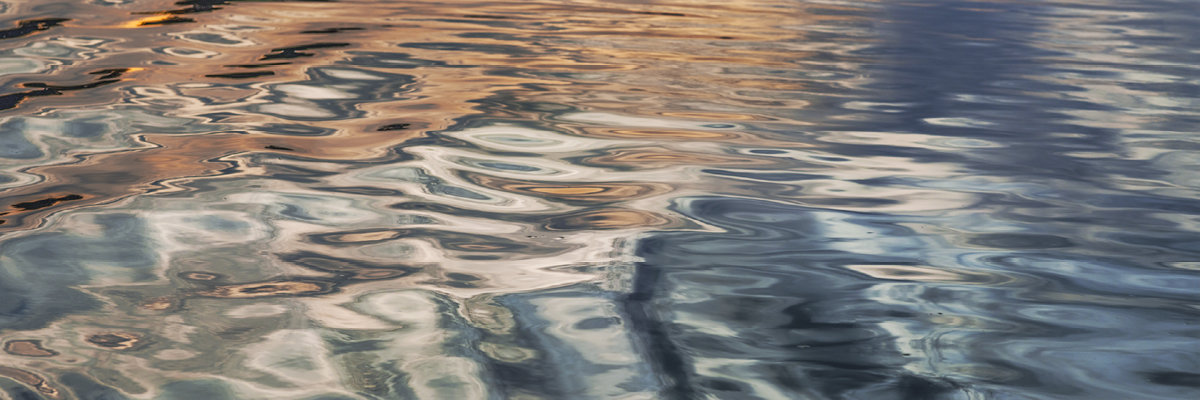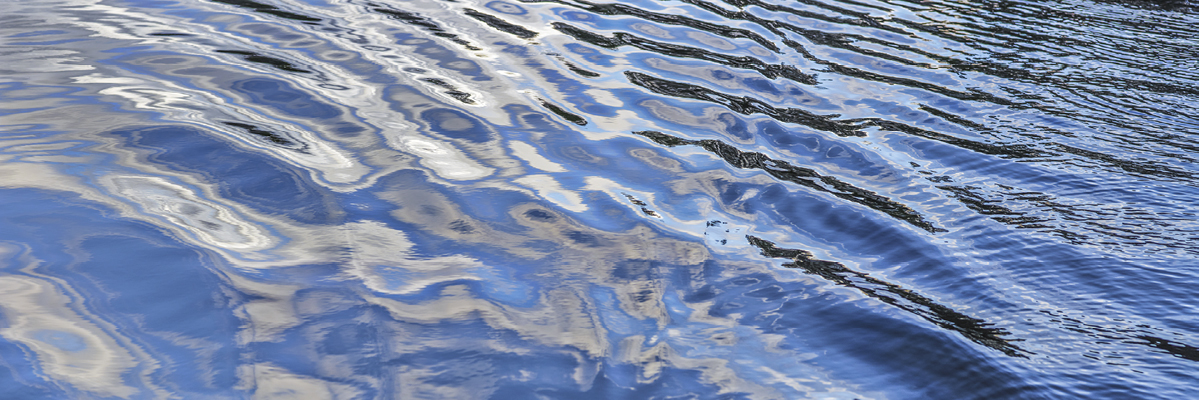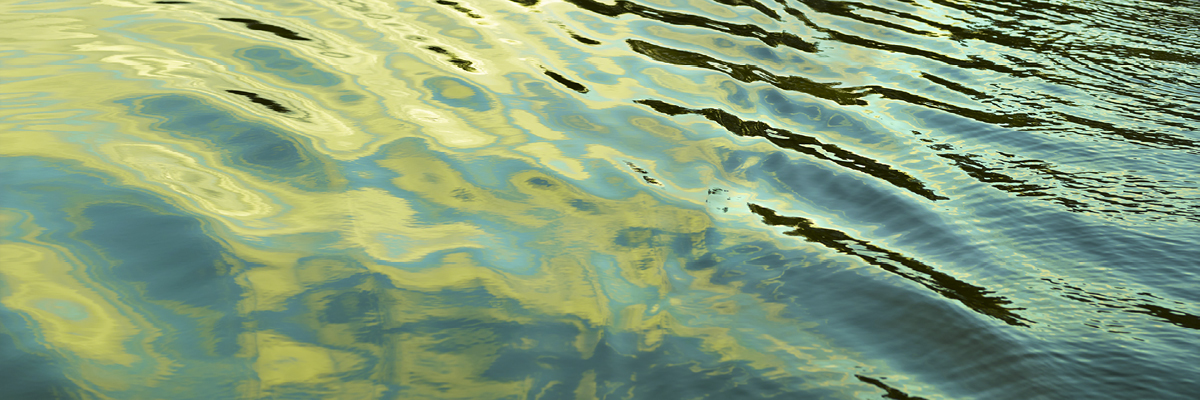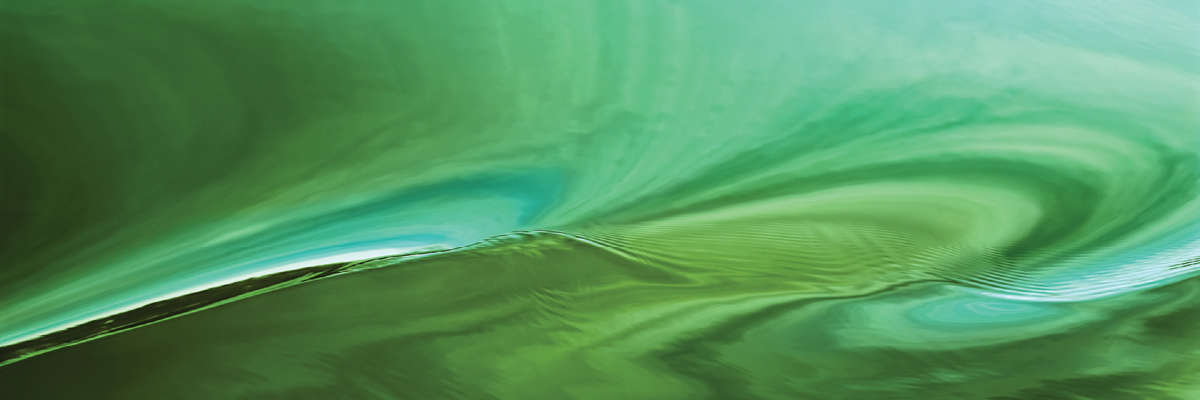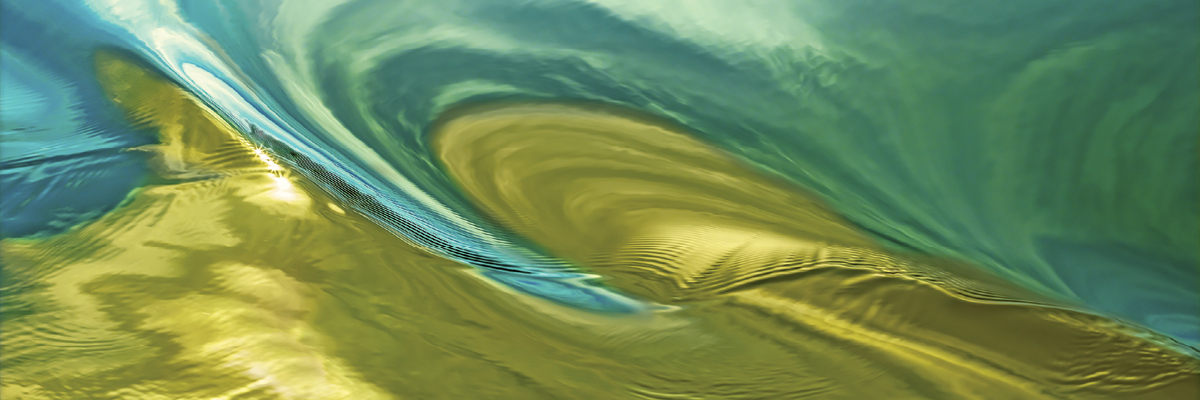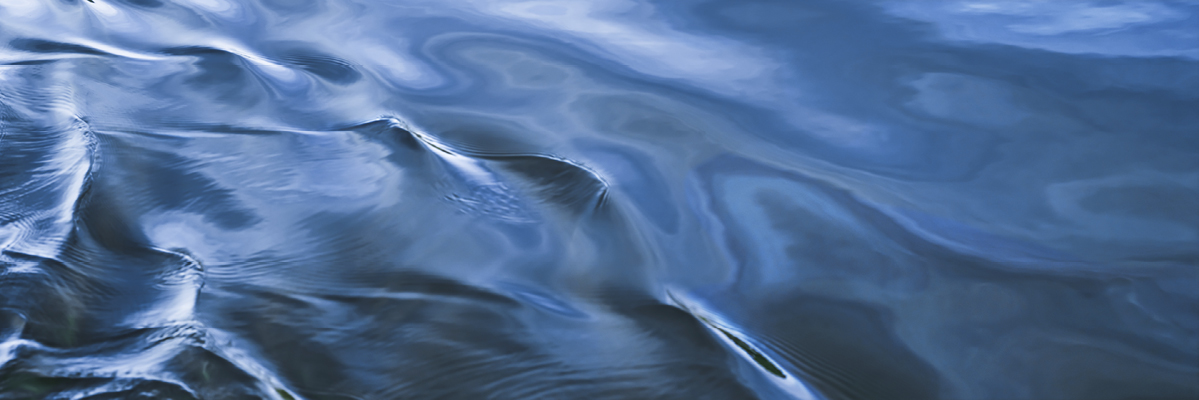One, Desert Wetland
As CEO of DK Las Vegas, owner of One, the high-rise condo complex on the south end of Las Vegas Boulevard, Uri Vaknin gets a bit excited when speaking of his company’s latest offering. The building has been redesigned around the theme of elements, with water being the most prevalent, an “oasis,” if you will, for the residents.
“They come here, drive down this long, 600-foot drive … and then once you get here you’re in this oasis of living. And oasis, obviously, brings on this concept of water,” he explains. “Not to get overly conceptual here, but it’s also an amazing visual. People love the concept of water, and so there is no other person I know of who creates imagery that’s as compelling, dynamic as Marilyn.”
 He’s talking about Marilyn Suriani, an Atlanta-based photographer commissioned to create a three-wall triptych that ultimately will cover 54 linear feet in the building’s lobby. Suriani’s central work highlights an overall theme for the property, says Vaknin. “In every elevator lobby in the building,” he says, “we’ll have her photography as well. So it’s not just one image. It’s the main image. And then the theme is carried throughout both towers in every elevator lobby.”
He’s talking about Marilyn Suriani, an Atlanta-based photographer commissioned to create a three-wall triptych that ultimately will cover 54 linear feet in the building’s lobby. Suriani’s central work highlights an overall theme for the property, says Vaknin. “In every elevator lobby in the building,” he says, “we’ll have her photography as well. So it’s not just one image. It’s the main image. And then the theme is carried throughout both towers in every elevator lobby.”
Suriani, a professional for 36 years, discovered photography relatively late in life. At 28, after completing a bachelor’s degree in sociology and psychology, and well on her way to a master’s in the same field, she found herself “tired of being in my head, and tired of writing papers. And it just didn’t seem like I was going in the right direction.” She knew she needed something more relevant, a more hands-on approach to the world. As luck would have it, she found herself enrolled in a photography class, and that was it. She was hooked. Her first instructor approached the frozen image as a strictly black-and-white affair and “wanted us to start going around photographing people. And that was something I loved,” Suriani says now. She found it evoked her sociological training. “Most of the people in the class were having a really hard time but I was really enjoying it.”
She started following photographers whose images had changed the world, notably Lewis Hine and Jacob Riis. “They were both responsible for changing (child labor) laws,” she says, excitement creeping into her voice. “I thought, ‘Wow, I could do this!’ It really resonated with me because of my own background.” These thoughts led to a year of classes at the “Portfolio Center” in Atlanta, and an assignment from her instructor that would be life changing.
It was the early ‘80s and Atlanta Magazine wanted to do a piece on dancers in local strip clubs. Suriani picked up the assignment after one of her professors realized she would be a better fit for the subject. The problem was she was too good a fit. Her pictures never made it into the magazine. “With my background in sociology, the way I like to look at things, they thought it was too raw,” she says. “It was meant to be a fluff piece, and during that period, the strip joints in Atlanta were proliferating. Atlanta Magazine had already lost its more intense documentary side and was moving more into the fluffy world.” So she took what originally was intended for the disposable pages of a glossy monthly and turned it into the critically praised book Dancing Naked in the Material World (1992).
With this success, Suriani turned her attention to the same subjects many of her photographic heroes had captured. She created documentaries about women in prison, and Storefront Churches, which focused attention on urban, non-corporate congregations. In 1996, she was one of the few artists chosen to create installations at Hartsfield-Jackson Atlanta Airport to honor the Olympic spirit and welcome incoming athletes. Her piece is still in place nearly 20 years later.
Then everything changed.
About 12 years ago, Suriani got remarried. Husband Bill (“He’s really good at coming up with the nitty gritty marketing ideas and that kind of thing. He lets me be the artist. It’s not easy. We don’t fit the mold. I’m glad I don’t fit the mold.”) had a beautiful 4,800-square-foot house on the shores of Berkeley Lake, about an hour outside of Atlanta. Suriani sold her city house and, suddenly, this Philadelphia-born, Atlanta-raised urbanite, known for photographing life’s underbelly, found herself living a pastoral, suburban existence. “It had a very good effect on me,” she says, laughing. “I would say that I’ve always been pretty much a cynic and tense, so this was a departure. But it was a good one. I felt I needed it. It kind of balanced me out a little bit.”
“Every time I go somewhere I take pictures,” Suriani says. “That’s how it goes.” While wandering the grounds of her new home, she mused, “What am I going to do now?” At first, nothing really spoke to her: “It wasn’t like I was really excited about photographing anything out there.” But then it did.
“I was never really a nature girl,” she acknowledges. “I guess being out on the boat, in the fresh air, the beautiful sunsets … I just started falling in love with all that. And that was all new to me. Because of that, I felt the urge to see what I could do and do it in a way that was different.” She wondered what most people saw as they took in her landscape. She discovered that “most people view the water.”
But how could she make water pictures interesting? She decided to take an abstract approach, a reversal of the hard realism of her earlier work. On the lake, she pointed her camera down, eliminating context. Her Hasselblad digital froze the ever-changing surface, capturing a unique moment, but one passively familiar.
It worked.
While critical success had long been part of her résumé, commercial success had eluded her. “There were probably some mercenary aspects to that. I wanted to start selling my work. I’ve done some great documentaries, and I’ve gotten some great grants and publicity. But as far as making a living off of that, that’s not easy to do.”
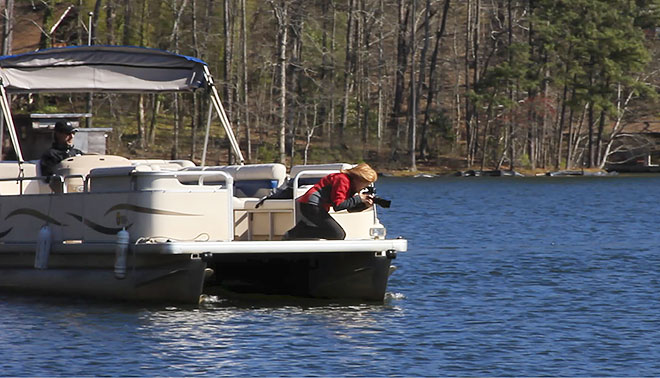
The eye behind the lense, Marilyn Suriani.
She found buyers for the new stuff. “I sold a lot of my work, a lot of the nature, water work, to art consultants. Art consultants sell my work to hotels, health care settings and corporations.” Her works, for instance, now hang in all corners of the world, from Abu Dhabi to the Caribbean. “I have some work in a lot of the major cities. I’m in several corporate collections.” And some museum curators are placing Suriani pieces in permanent collections.
An old friendship from her Atlanta days helped win her the commission at the One condo project in Las Vegas. Before he became a condo impresario, Vaknin was an art dealer in Georgia’s capital and had crossed paths with Suriani, the photographer. When she wanted to sell her home in Atlanta and move to the lake, Vaknin was hired to help find a buyer. “I was probably his best client,” Suriani says now, “because I did pretty much whatever he suggested I do. He sold the house in two weeks. Paid for my girl’s college education, new car, all sorts of things.”
Soon Vaknin, now living in Los Angeles and Las Vegas, and Suriana were on opposite sides of the country. But they stayed in touch via Facebook. Vaknin remembered the large-scale installation, Liquid Emerald, she had done in Buckhead, an Atlanta suburb. And though she wasn’t his first choice for the One Las Vegas project, the two local artists he considered “hadn’t pulled off a project of this magnitude. So I really had to go with an artist who I knew could successfully do this. It’s not just the (photographic) image. … it’s also knowing how to do the printing, how to do an installation of this caliber.” And once he’d seen the space up close, he knew Suriani’s work was what he needed. “There’s a Hebrew word, b’shert, which means ‘it was meant to be,’” he says. “Marilyn was meant to be the artist for this project.”
Suriani was thrilled over the opportunity and excited about the “water” theme. “Here it’s Vegas,” she says, “and these condominiums can be somewhat of an oasis within the desert. Of course, dealing with the water issue, how timely that is, right now, in terms of the lack of water. Just what it means to be in a desert. And he wanted blue, so all three pieces are blue.”
The timing couldn’t have been better. Coming off the Liquid Emerald installation, she had several beautiful blue pieces she had been unable to use. She selected the most appropriate shots and presented them to Vaknin, who had final say. “Marilyn’s work speaks exactly to the feeling,” he says, “the visual of the indelible mark we’re trying to create at One Las Vegas.”
In Georgia, Suriani’s installation was mounted on glass and backlit, creating a luminescent effect. In Vegas, her triptych will have a more solid feel. All three pieces will be printed on polyester photographic opaque film made by Fuji, and affixed to an acrylic plexi using an optically clear adhesive. The entire piece will be mounted on Sintra, a hard board with a white coat on it. While the installation will be opaque, the white will help illuminate it by reflecting through the photos’ lighter areas.
Suriani’s pieces will represent some of the final touches as One prepares for a grand reopening. “Everything is coming together now,” Vaknin says. “We’re going to have a vernissage, which is a French word for an art opening.” Suriani will be on hand to answer questions, he says, or “to give a lecture to talk about her work and the importance of her work, so people understand more than just on a visual basis.” For Vaknin and Suriani, it will represent a marriage of form and function.
“In some ways,” Vaknin says, “it could be as fluff as people want it to be. And in other ways it could be as conceptual as people want it to be. For me, that’s what makes great art, when it touches on all aspects and all facets of the mind.”
For more information on January’s vernissage, or on other One Las Vegas events, go to www.TheOneLV.com.

